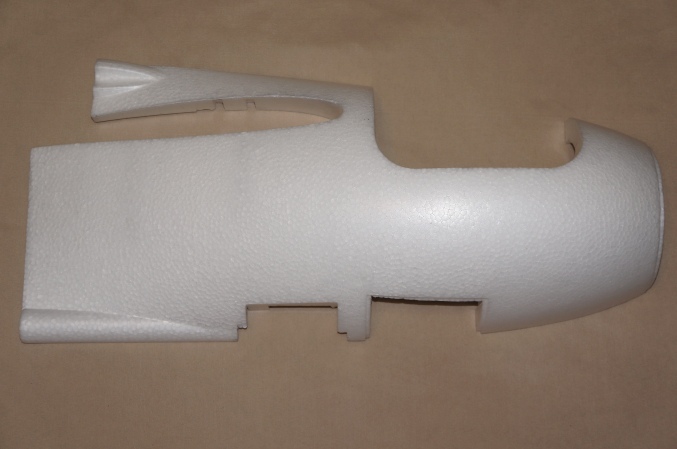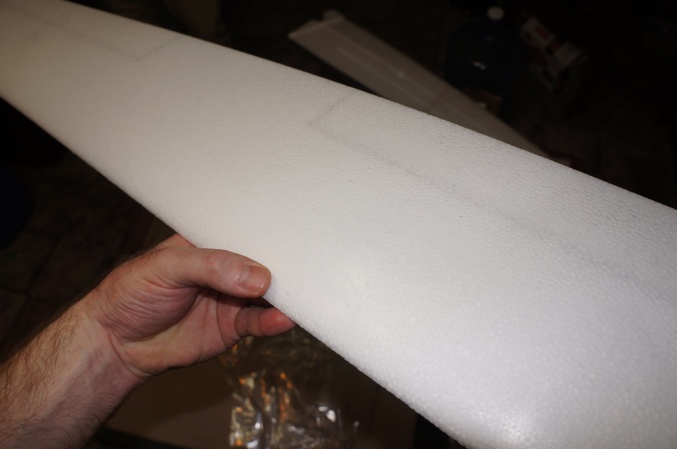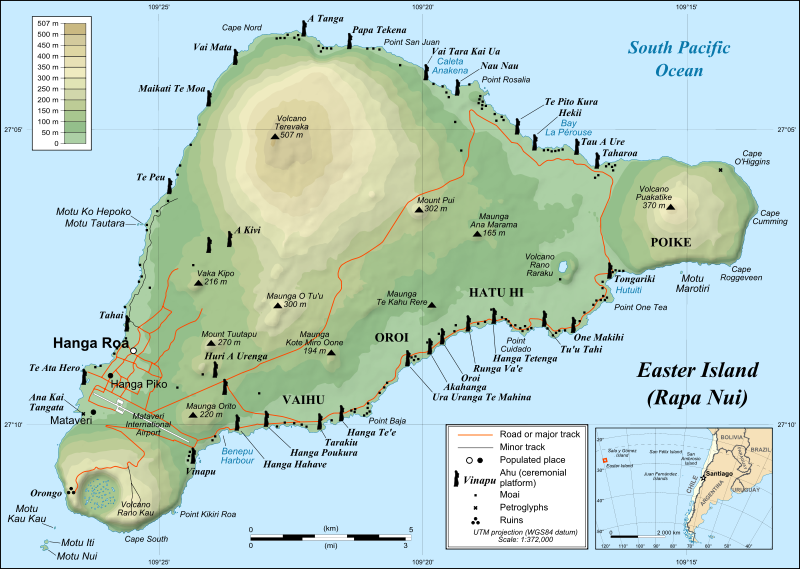 I've had this idea in my head for some time now, finally got serious about sketching it out.
I've had this idea in my head for some time now, finally got serious about sketching it out.
 Yes, I know that all the props are pushers ; ) I couldn't find the tractors and wanted to get some pics up anyway. First flights will all be with gemfan carbon plastics, but I'm stoked to use these wooden props once everything is verified to function in flight. She looks a little fat in the rear I admit, but that is 5.6 Ah 4s in a hard case. All up weight is 2.71kg.
Yes, I know that all the props are pushers ; ) I couldn't find the tractors and wanted to get some pics up anyway. First flights will all be with gemfan carbon plastics, but I'm stoked to use these wooden props once everything is verified to function in flight. She looks a little fat in the rear I admit, but that is 5.6 Ah 4s in a hard case. All up weight is 2.71kg.
 Spindly landing gear fills in for top-secret next gen gear that can't be shown yet. This configuration has some Klingon Bird of Prey in it, that's obvious.
Spindly landing gear fills in for top-secret next gen gear that can't be shown yet. This configuration has some Klingon Bird of Prey in it, that's obvious.
The goal for this project is a clear view, roll/tilt gimbal that utilizes the waterproof GoPro housing and is positioned coplanar with the motor mounts.
I'm using a pull/pull set up for both axes. It works well, but a little more dialing in will be needed. I'll get a video up tomorrow after I clean my shop.
 Tilt control and video out are fed down the central rotating axle. This axle and gopro housing are the only moving parts, both riding on nylon bushings. Tilt pivot is vibration isolated from airframe. "Manually printed"- pivot sockets, control horns, and video out connector are attached to waterproof gp housing.
Tilt control and video out are fed down the central rotating axle. This axle and gopro housing are the only moving parts, both riding on nylon bushings. Tilt pivot is vibration isolated from airframe. "Manually printed"- pivot sockets, control horns, and video out connector are attached to waterproof gp housing.

Stiffen and lighten this yoke, increase the diameter of the axle, print some proper gopro attachments (Rostock-Kossel in the works!!) The camera housing is easily opened without removing from the yoke.

Belly up view. Remember, this is just a rough draft, plenty of little changes to make for MkII, starting with a completely different frame. I'm done with the hub and spoke form. Multi-copters are basically just a packaging exercise, and I keep wishing for a different shape while trying to integrate all these sweet-ass robot parts. The next frame will be a folding Roman five, a "V" with horizontal bars top and bottom.
I can remove a lot of weight from this of course, the motor mounts, arms, wiring, etc. I like to make things heavy and adjustable at first, then begin to lighten and lock down everything.
The important part is the parallel rails and the gimbal arrangement, that's what i want to develop a bit more. The roll axis motivation could come from any number of sources, I've used pull/pull for it so the servos could be grouped and positioned optimally for weight balancing.










